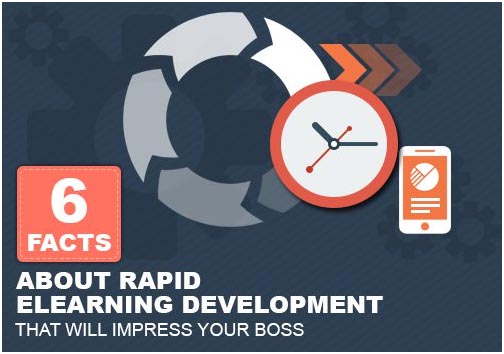
While mobile learning or mLearning is being widely adopted, the challenge of how to handle the migration from Flash to HTML5 still persists. This article outlines how you can use this opportunity to effectively migrate your legacy courses and enhance your online training delivery’s impact.
Moving Your Online Training Courses From Flash To HTML5
While mLearning or mobile learning adoption for new requirements has gained tremendous momentum in the last few years, you still have the challenge of what you should do with your investment that is locked in your legacy Flash courses. As we all know, Flash does not support all mobile devices (most smartphones and tablets). Increasingly, browsers are blocking Flash content. While this sounds simple enough, there are several aspects associated with the migration exercise that you should watch out for. You can refer to my earlier articles that provide insights on how you can successfully plan your migration from Flash to HTML5:
-
- Flash To HTML5 – Essential Toolkit For Successful Migration
- How To Convert Legacy Courses Into HTML5 The Right Way
Before determining how you should move with the migration effort, let’s take a look at:
-
- Some of the other, associated challenges that you must address.
- How you can use the migration opportunity to uplift your learning strategy to incorporate modern corporate learning featuring current trends like gamification, microlearning, and social learning.
What Are The Other Factors You Should Consider As You Embark On The Migration Of Your Legacy Flash Courses To HTML5?
Instead of planning for just the migration exercise, do review some of the associated challenges and factor for them in your migration plan. This holistic approach will help you create the required impact on your ROI.
Organizational View: With economic volatility comes pressure on training budgets. Therefore, Learning and Development teams now more than before, need to demonstrate the impact of their training budgets on learners and business. With changing dynamics, they need to address following specific aspects related to mLearning or mobile learning like:
-
- Facilitate learning on the go.
- Facilitate application of the learning (not just knowledge acquisition).
- Enabling aspects: Need to plan upgrades (Learning Management System, browsers), evaluate BYOD policy, and address security concerns.
Learner view: Over the last few years, the learner expectations and the way they want to learn have also changed significantly.
Specifically:
-
- Change in expectations.
They want to learn on device of their choice (preferably on smartphones and tablets). They want online training courses to be bite-sized (microlearning). They want the learning to packaged in a manner that is easy to learn and easier to apply. Additionally, they want the learning to be available to them within their work-flow (just in time training). - Change in demographics.
Globally, the work-force is changing to include Millennials in significant numbers. The way Millennials learn is considerably different. They respond better to collaborative learning.
- Change in expectations.
At the core, the migration is a technology uplift (from Flash to HTML5) but clearly this is not sufficient. Your migration plan needs to factor for measures that offset the challenges from the organizational view as well as align to the the way learners want to learn.
Here’s a short video on how you can engage your millennial workforce. It provides insights on the how you can manage the changing expectations of your learners.
Why Migration Of Your Online Training Courses From Flash To HTML5 Makes business Sense?
Migration of courses from Flash to HTML5 makes business sense because of:
-
- Intrinsic challenges associated with Flash courses (no support for most smartphones and tablets).
- Limited support from the browsers. There are browsers that support Flash based courses. However, to run on these browsers, a Flash plug-in is required. Learners prefer a hassle-free learning experience and HTML5’s compatibility with all kinds of browsers gives them just that.
- There is a fairly large investment on these courses that you need to recover.
- The shift from desktop learning to mobile learning is increasingly becoming evident with every passing year. In fact, the percentage of people using mobile devices had overtaken the percentage of desktop computer users globally in the year 2014 itself.
- Reports on upcoming trends in the learning space affirm that there will be a surge in responsive design-based learning, so much so that responsive design tools will be a “must-have” for learning organizations.
How Can You Capitalize Further On The Migration Opportunity To Enhance Your Online Training Delivery’s Effectiveness?
I see this as a great opportunity to uplift and redefine your learning strategy and online training delivery. All these aspects are relevant for your migration and can be used for new development.
At EI, we recommend an approach of modern corporate learning that:
-
- Appeals to both traditional learners and Millennials.
- Aligns effectively to impact ROI.
How You Can Achieve This?
- Some of the techniques we have used successfully to create learning experiences that will appeal to all sections of your learners and help you create the required impact on both learners and business are:
- Gamification.
- Microlearning (for both formal and informal learning).
- Responsive learning portals with learning paths.
- Social learning (content curation and collaborative learning).
You can also evaluate the trending new formats like:
-
- Learning apps.
- Interactive videos.
What Are The Gains You Will See?
Besides unlocking your investment and meeting the increased expectations (from business as well as learners), you will see the following gains. All of these are the reasons why migration of your legacy Flash To HTML5 makes tremendous business sense.
You will be able to:
- Provide sticky learning on devices of learners’ choice.
- Reinforce learning and offer remediation (as required).
- Provide just-in-time learning aids to facilitate application at the time of need (within the learners’ work-flow).
- Facilitate collaborative learning.
- Have an impact on short term and long term learnability (learning efficacy).
- Factor for changing learner demographics (increasing millennial workforce).
I hope this article helps you in using the migration opportunity to step up your online training delivery that will provide gains for both learners and your business. These pointers will be equally relevant for development of your new courses featuring mLearning or mobile learning. Do contact me if you have need any specific support in this endeavor.



